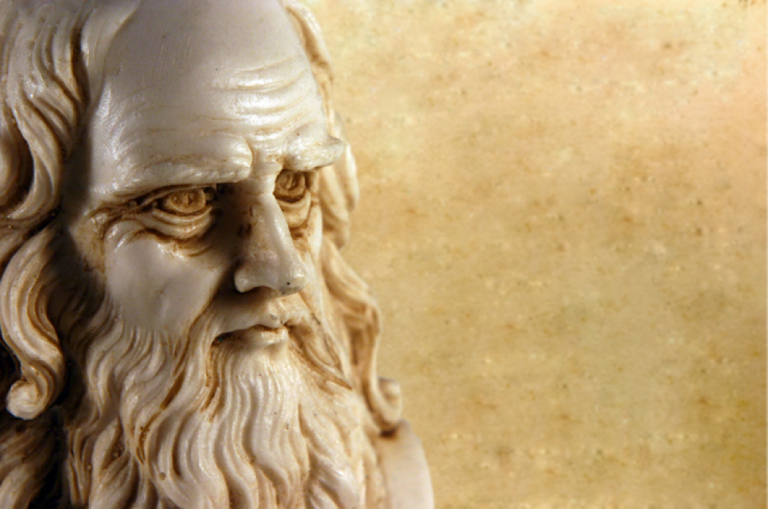Leonardo's work includes about thirty paintings (more than a third are missing, and a quarter is clearly attributed to Leonardo), and a significant number of manuscripts and drawings (both in notebooks and on separate sheets). Nonetheless, it represents a unified whole. His texts and illustrations are devoted to art and develop all aspects of knowledge. The problems of art are often and quite obviously tied to the artist's scientific observations. Thus his creativity acquires the appearance of a compendium of observations and notes, from which a fascinating reading, in which the traditional divisions are absent. With his will, made on April 23, 1519, Leonardo leaves his student Francesco Meltsi all his manuscripts along with the "approaches and portraits clarifying his art and the craft of the artists." Malki is aware of the Master's thoughts. He worked with him on the collections he was about to issue. But to our surprise, he has not succeeded in completing the Leonardo-designed works, even the "The Tract of Painting," in which he devotes much time and labor. Today it is assumed that he is the chief advocate of the compilation of the Codex urbinas 1270 (stored in the Vatican), which includes the writings and projects of da Vinci. Probably Meltsi has gone wrong with this complicated undertaking because he had to combine notes from all areas of knowledge.
Fortunately, he showed the manuscripts of some friends and explorers. In the second edition of Vasari's biography, "Life of Leonardo" (1568), a kind of Milanese artist (probably Oregio Luigi) who had parts of Vinci's painting, which he intended to publish in Rome, was mentioned. The many failed attempts to be published in the middle of the sixteenth century suggest that Leonardo's writings are likely that their owners were afraid of being exposed as heretics. In 1651, some fragments of Leonardo's "Treatise on Painting" were published in French by Rafael Deufran. Only in the beginning of the 19th century, in 1826, in an Italian series appeared the artist's notes from his observations in the field of hydraulics. But generally, Leonardo's technical and scientific works have been buried in the following centuries. Only single sheets are found. The large series of drawings are grouped in unreliable collections such as the Codex Atlanticus and the Windsor Collection, on which no serious studies have been conducted. Vasari reported the strange fact that since Leonardo wrote with his left hand, he started the line from left to right. Thus his writings can be read only by means of a mirror. The same author claims that the artist started his drawings from the lower left corner of the sheet and unfolded them to the upper right corner.
The "science" that creates Leonardo generally disappointed the philosophers who, as it stands, are keen on the systematisation of the observations. It has impressed only those thinkers who have admired the ability of Vinci to methodically adopt phenomena and to highlight their essential characteristics. There is no doubt that Leonardo's intellectual activity is consistent with the principles of aristotelism, which stems from the gradual penetration of individual objects, while Platonicism is oriented towards the original / primordial unity. Nevertheless, the dedication of an exceptional value to mathematics, an absolute paradigm of the right knowledge, and the emphasis on "infinite ragioni che non sono in esperienza", counterbalance radical empiricism, to which, Leonardo firmly sticks. This position should be perceived by the state based on a complete approach that many commentators do not bother to recover. Leonardo aims to build a science for the "visible" and does not hesitate to subordinate the conclusions of philosophy or science to the physical world of the privileged role of painting, necessarily related to observation, as "the eye is not so often deceived" ). In fact, the paradox is only apparent: Leonardo does not deny the relative accuracy of the senses, in this case it is not the eye of the ordinary man, but the eye of the scientist. The activity to be represented, ie. painting is inextricably linked to the scientific study of nature and helps to realize it at the moment when it provides some methodical approach. The axiom that Leonardo repeatedly echoes in the introduction of the "Treatise on Painting" is actually the identity of painting and philosophy, of art and science.

This is a really good write-up. I'm happy someone recognises his genius. I wrote something similar too at my blog. Please do check it out.. https://steemit.com/steemstem/@thecappedvillain/the-science-behind-mona-lisa
@godflesh your all post are very informative and and also providing some guidance to other. So keep it up soon you will be succeed.
Never miss this contest chance to won 10 BSD.
https://steemit.com/contest/@kiani007/a-bit-curious-contest-1-20-sbd-in-prizes-7-5-1
You got a 10.83% upvote from @postpromoter courtesy of @godflesh!
Want to promote your posts too? Check out the Steem Bot Tracker website for more info. If you would like to support the development of @postpromoter and the bot tracker please vote for @yabapmatt for witness!
@godflesh sir your all stories and philosophy are great u will reach ur goal soon !
Amazing Art really nice one.
Such an amazing man, Leonardo... I truly believe we all are Lenoardos in ou own sense - capable to express ourselves to our fullest potential, be it inventions, social ideas, spirituality, art... It's all just beside us. We just need to learn to see it, feel it... What's your devotion?! Please don't say that your TV screen is all you can see...
Leonardo was a wonder artist. His artistry skills were just phenomenal. Classical works and brilliant contributions. His paintings stand today as great master pieces. Thanks for sharing @godflesh.
I wish I can see his hidden art stashed away by the Vatican.
I wish I can see
His hidden art stashed away
By the Vatican.
- zetetrahedron369
I'm a bot. I detect haiku.
That was an unexpected treat to experience today, thank you Haiku bot detector.